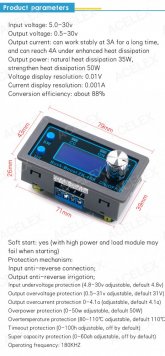I can tell you from personal experience, they do ship at different state of charge. Always verify.Cells from the same batch and MFG will often be within a few percent of each other. However I have seen cells that are 10-20% different in SOC, and some folks have reported receiving cells at 90% and 50% in the same order. That is not something that passive balancing will remedy. Maybe if you only charge to say 13.7-13.8V, and don't mind only using 50% of the packs capacity?
Its terribly unusual for B grade cells which fail the highest batch group testing to have the test suspended when equipment is tied up, and they are sold as is to the grey market resellers.
I had multiple cells arrive above 95% SOC, and others at 50%.
I also think that sometimes the balance is counterproductive on a BMS, but don't have enough experience to say conclusively.
I know the Daly BMS does 35 milliamps of resistive balancing, and then doesn't do it continuously. It could easily take a year to balance cells like that (or even more, depends on how often it gets above 3.4v where I set the balance to start).
A top balance is just a sure way to get the SOC in cells quickly in sync. You are welcome to do as you wish with your cells, but I recommend it.



